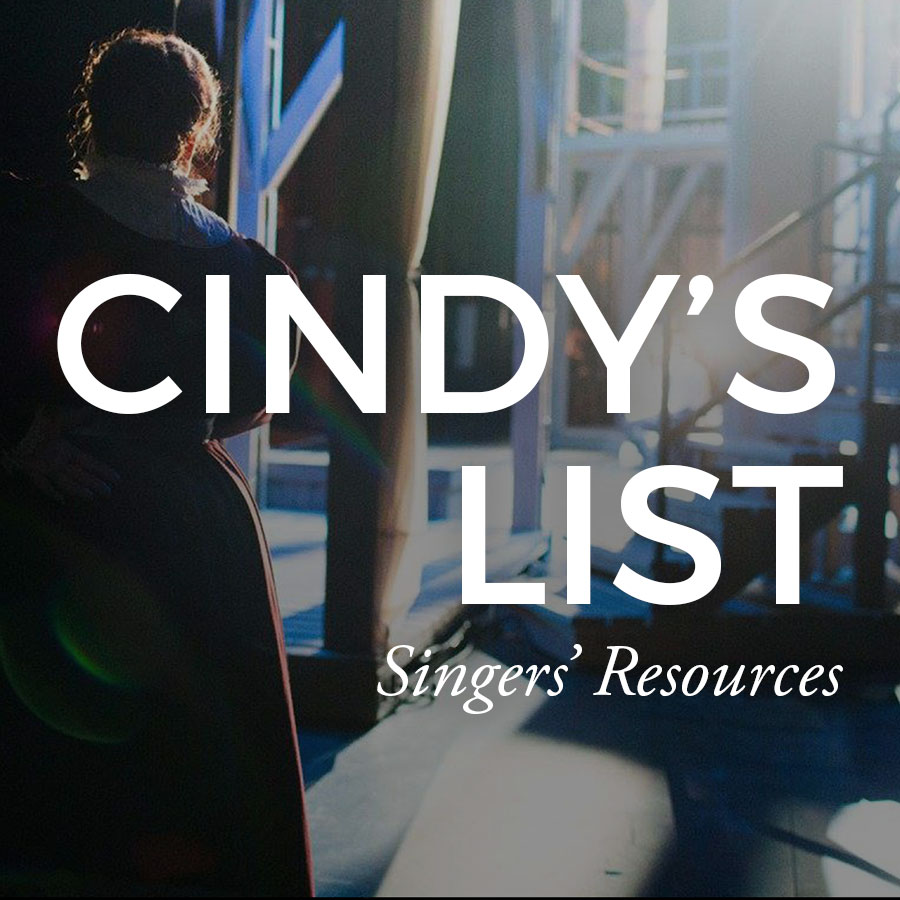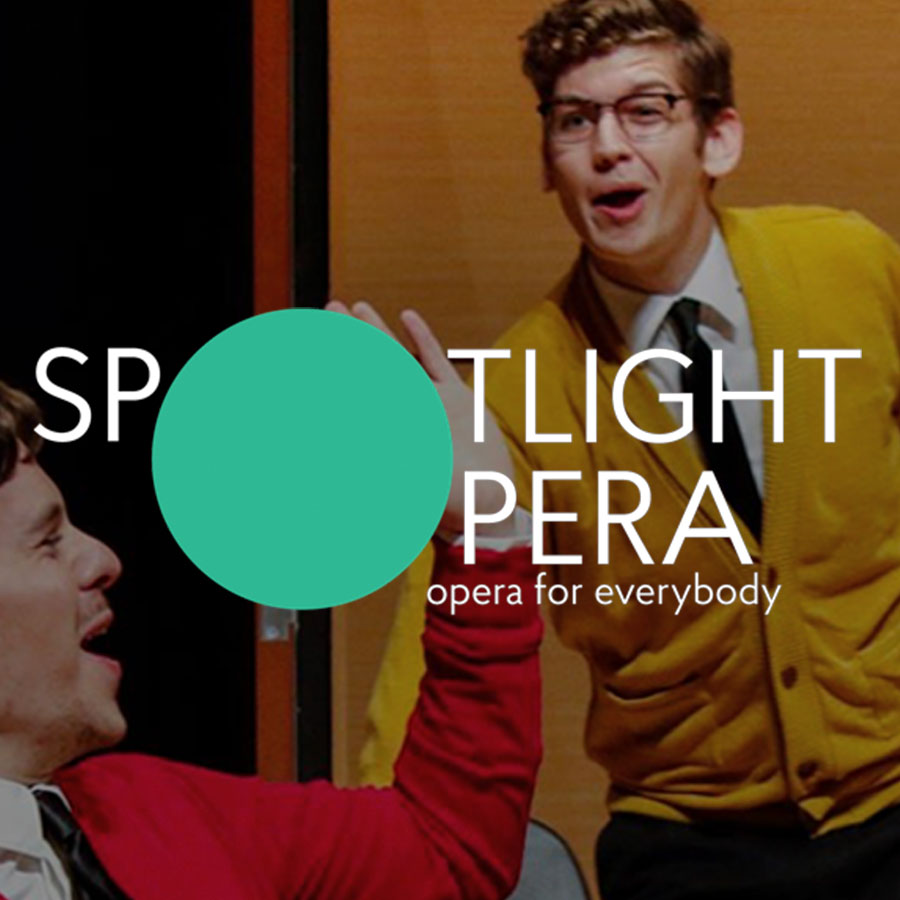Opera is a complicated art form. It is, as Richard Wagner called it, “Gesamtkunstwerk” —- all-encompassing art. Music, dance, acting, poetry, design, painting, costume building, lighting —- all are called upon to create the grand illusion and take audiences into a world of overwhelming sensation. It is part of what makes the art form so compelling and unique.
But stripped-down opera, opera on a bare stage with minimal costuming and lighting, is also compelling, if the singer-actor is fully engaged and engaging to the audience. It is a delicious challenge to the artist, to hold an audience with only your instrument, your craft, no trappings. It also puts the artist in her most vulnerable state, in which her imagination and communication skills must create an entire world for the audience.
Ironically, it is in this state of vulnerability we most often ask young, developing artists to perform. In a school or workshop setting, we ask our young artists to open themselves, to take risks, to tell their stories — all with an imperfect and nascent set of tools. Ideally, a strong acting component would be a part of any singer’s education, but too often it is not. Singers should be taking the same kinds of acting courses that any theatre major received —- but too often, they are not. The onus of educating student singers in acting technique then falls to opera workshop directors.
In preparing my undergraduate students for performance, I ask them first to research the background of the work. They should know the composer’s and librettist’s names and dates, the date and location of the premiere and of other important premieres, what singer premiered the role and any background information available about that person, the source material for the work (the play, sketch, poem, or book from which it was derived), general performance history and traditions.
Next, we look at the time and place in which the action occurs, and I encourage them to find graphic representations of each of the questions represented. What are the dates of the action? What country or region? What specific location? What are the societal class and socio-economic levels of the characters? What was happening in the country at that time? What were the major political events? The predominant religion? What were class relationships like? What was happening in art, industry, science? What did people wear at this time? How did they travel? What did their homes look like? What kind of education did they receive, and where? Where did they work? What tools did they use? What did they eat and drink? How did they pass their leisure time?
Then we move from the general to the specific. First, it’s essential to read the libretto from cover to cover, in the original language if possible; translated if not; using a singing translation to supplement a word-for-word translation. It always amazes me how many students think they can skip this step and have no idea of the context of the aria they’re performing. How can you understand, form an artistic point of view, or communicate that point of view if you don’t understand the full context of the piece you’re about to sing? Not only should a singer read the entire libretto, first thing, but they should also read the source material.
Then, and only then, are we ready to proceed to specifics about the character, beginning with personal information. What is his or her name? Age? What does s/he look like? Where is s/he from and where is s/he currently? What is his/her ethnicity? What is his/her socio-economic background? Level of education? Job or position? What is his/her current status, and is it higher, lower, or the same as what s/he was born to? In this story, is s/he the protagonist or antagonist? Does s/he have any illnesses, injuries, or physical issues that affect the way s/he moves or carries him/herself? What kind of clothing does s/he wear and how does it affect his/her movement and carriage? How smart is s/he? What are his/her strengths, talents, abilities, qualities? What are his/her weaknesses, failings, distractions? How does s/he express him/herself? What kind of language does s/he use?
Next, we look at relationships. Who are the other characters and what are each of them in relation to your character (friend, enemy, family, lover, employer, colleague, rival, etc. --- they can be more than one thing)? What is your character’s socio-economic status compared to these characters? What do each of these characters say about your character throughout the piece? What interactions does your character have with each of them?
Now it’s time to explore the character’s goals, motivations, and obstacles. What drives your character --- why is s/he who s/he is? What is his/her primary objective throughout the story? Does it change? How and why? Who or what stands in your character’s way of achieving his/her goals? Does that change? How and why? Does your character achieve his/her goals?
Armed with all this information, the singer actor is now ready to make some informed decisions about his or her vision of this character. But it can still be difficult for young singers to connect personally, especially when the character lived in a radically different era or has had very different life experiences . So the next step is to find ways in which they can personally relate to their character. I ask them to identify shared experiences, background, and opinions, similar personality traits, similar physical traits, and similar motivations or objectives. I ask, what do you find difficult to relate to with this character? How can you find common ground to understand those things?
Sometimes students need more help finding the similarities. It helps to identify fictional characters from familiar books, television, or film; or to imagine the character as a contemporary —- what would s/he would be doing in life (job, relationships, status, etc.)?
For characters with which the student can’t seem to find common ground, often you have to discover milder versions of experiences that are relatable. For instance, hopefully none of your singer actors have been involved in physical violence —- but have they ever been angry enough to want to lash out, to actually hurt someone —- whether they did or not? A shy student may have a hard time relating to a character who is bold, so the path to finding commonality may involve identifying more intense emotions or desires and playing off of them. A student who dislikes his or her character could benefit from an exercise in which they must play that character’s lawyer, and defend their actions, desires, and beliefs.
For characters that exist in an unrealistic or fantasy environment, I encourage students to look at the influences to which the composer and librettist were subjected. What prompted them to create a fantasy world, and what are they trying to say with that that they felt they could not through realism? What are the similarities between the fantasy world and ours? There is much more leeway here for imaginative choice in the singer actor’s world-building, but they should be encouraged to explore as fully and specifically as if the answers were available through a quick Google search.
Another great way to help students get into the character is to have them write or film a back story and or after story. Have them describes the character’s life before the events of the staged story occur. What was his/her childhood like? What were his/her important relationships? Where did s/he live? What was the critical event that changed his/her life or set into motion the events of the story we see on stage? What happens to the character after the events we see played out on stage? If filming, they can do it in character, as if they’re being interviewed —- you can even have another student interview them, in or out of their own character!
I also like to devise exercises based on the demands of the script. For our upcoming production of Company, in which there are many sets of married couples, I plan on having the singer actors go on real time “dates” in character; and staging in-character “television” interviews, reality show style.
These exercises, and all these questions are just fancy ways of playing make-believe —- an informed sort of make-believe, to be sure, but make-believe nonetheless. Imagine what we could all accomplish as performers and directors and educators if we could take ourselves, our students, and our audiences back to that childish state of wonder, curiosity, and unselfconscious play.





